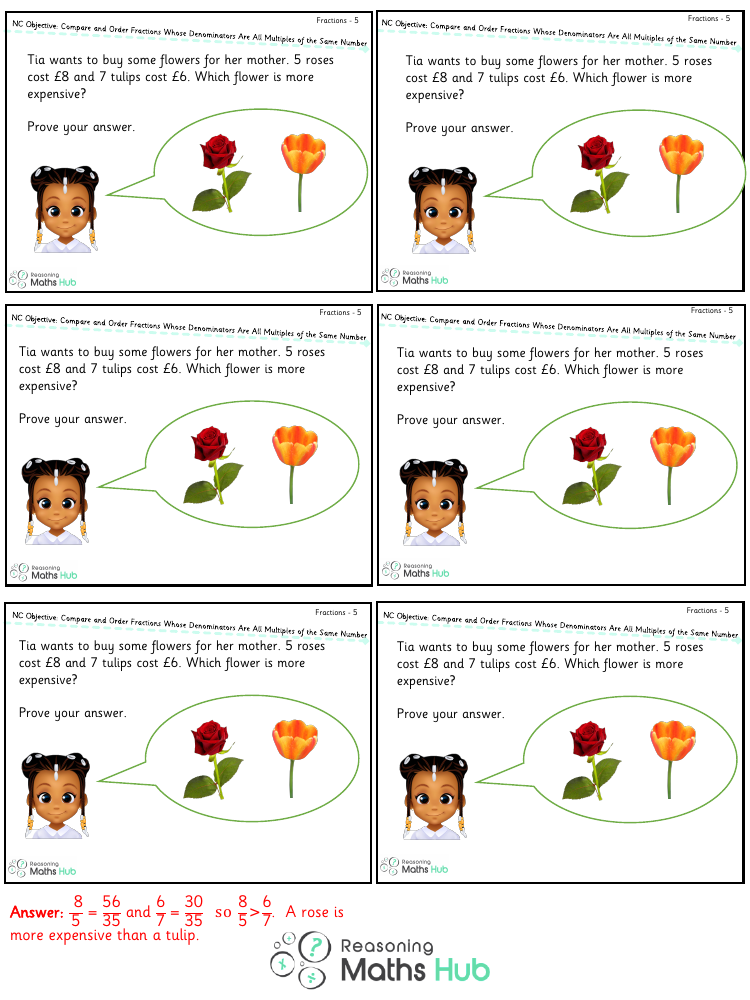Compare and Order Fractions Whose Denominators Are All Multiples of the Same Number 4 - Reasoning

Maths Resource Description
Tia is faced with a decision while choosing flowers for her mother; she needs to compare the cost of roses and tulips to determine which is more expensive. To solve this, we look at the price of 5 roses, which is £8, and the price of 7 tulips, which is £6. To compare the costs fairly, we need to calculate the price per flower for both types. This is done by converting the prices into fractions with a common denominator, making the comparison straightforward. For roses, the cost per flower is £8 divided by 5, which equals £1.60 per rose. For tulips, the cost per flower is £6 divided by 7, which is approximately £0.86 per tulip.
By converting these amounts into fractions with a common denominator, we get £8/5 as 56/35 and £6/7 as 30/35. Comparing these two fractions, it's clear that 56/35 is greater than 30/35, indicating that the cost per rose is higher than the cost per tulip. Therefore, we can conclude that roses are more expensive than tulips. This proof shows that, on a per flower basis, Tia would spend more on roses than on tulips, making roses the more expensive choice for her gift.
